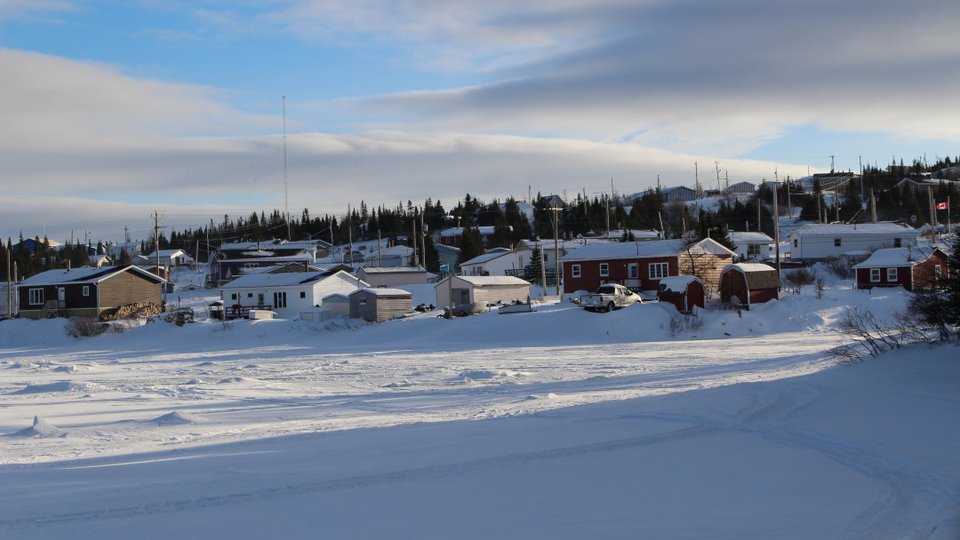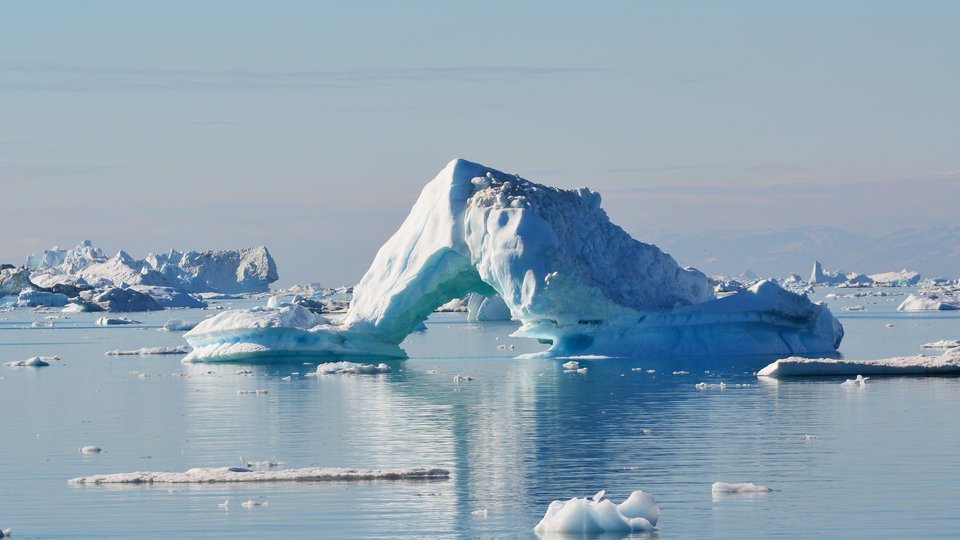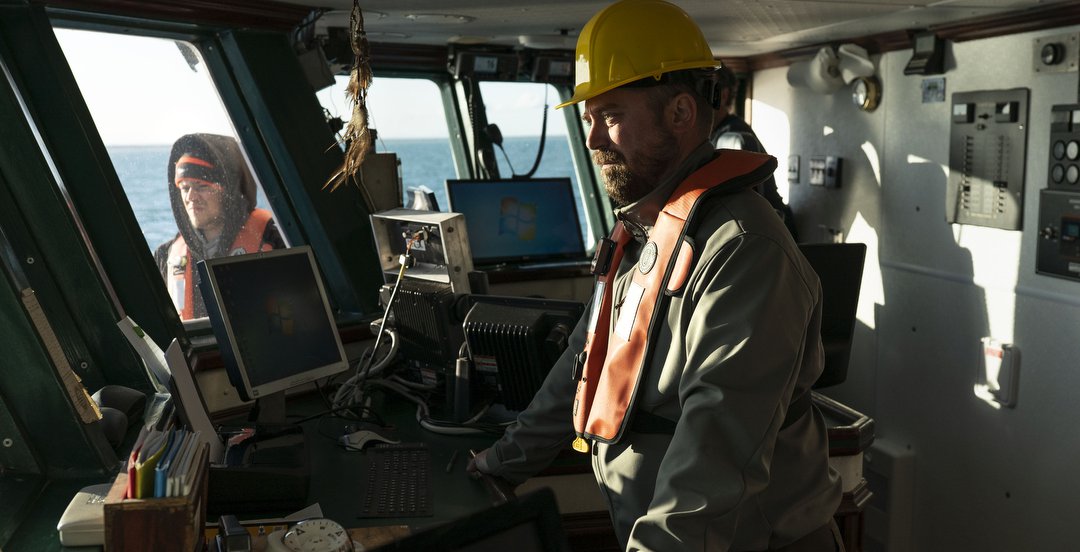
iding on the southeastern coast of Southampton Island in northern Hudson Bay, Nunavut, to wait out a 12-hr long storm with sustained gale-force winds gives one time to reflect on what has been a very successful scientific cruise, but not without its challenges.
We are an eclectic team of 20 science and ship crew aboard the research vessel William Kennedy collecting oceanographic data to improve our understanding of how the marine ecosystem surrounding the island currently functions and how it will respond to our warming climate. Everyday our team breaks new ground from observations of ocean structure along transects never before sampled to delineating local shallow and deeper water extents of algae, shrimp, and fish found on the ocean floor. The information collected will help us paint a picture of the local marine ecosystem to support fisheries and marine wildlife management decisions for local community, territorial, and national governing bodies in the region. This is a critical step forward in the face of a rapidly changing climate that is not only influencing the marine environment, but is garnering an ever-increasing industrial presence that will add new pressures on the sensitive Arctic ecosystem.
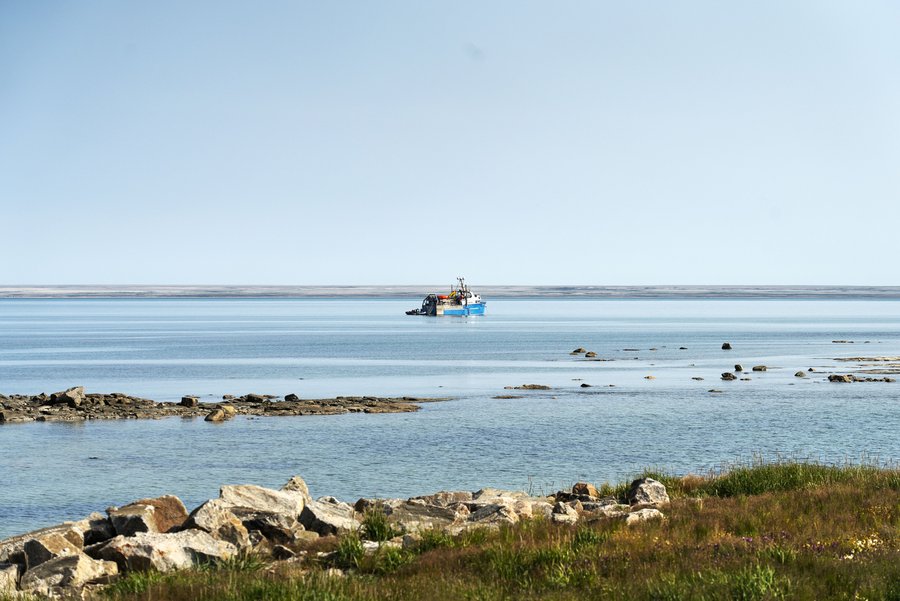
The R/V William Kennedy sits at anchor in Coral Harbour, Nunavut. Photo by Thomas Surian.
When organizing a research expedition in the Canadian Arctic, you need to plan as much as possible for the inevitable challenges that will be faced in a remote setting, whether it is re-fuelling a ship, keeping expensive science gear up and running, or hiding and waiting out a storm. Of course, we always add additional days of ship time in our plans to account for storms; however, you can only plan so much. When things do go wrong that you didn’t plan for, you need to keep a level head and make the best out of the situation. I like to call these learning experiences. With this being the William Kennedy’s first voyage to the Arctic, we have experienced our fair share of learning experiences. One particular event that occurred was the loss of our SCUBA air compressor due to a faulty factory installation, something completely out of our control. Attempts were made to fix the compressor, but the stars did not align and thus our SCUBA-diving benthic (ocean floor) ecologists aboard had to figure out a different sampling plan. Their goal was to map out species distributions of benthic algae (kelp and other seaweeds) in a region that has no prior observations, yet we hypothesized that benthic algae would play a key role in the local marine ecosystem. The learning experience for future SCUBA diving is to have a back-up compressor on board, but all was not lost for our current scientific expedition. The benthic ecologists were able to develop a camera system to view the ocean floor, while collecting species inventory samples from our scientific fishing trawl activities onboard. As a result, we are discovering that benthic algae have an extensive distribution around the southern portion of Southampton Island, supporting our original hypothesis and helping us plan for future expeditions in the region.
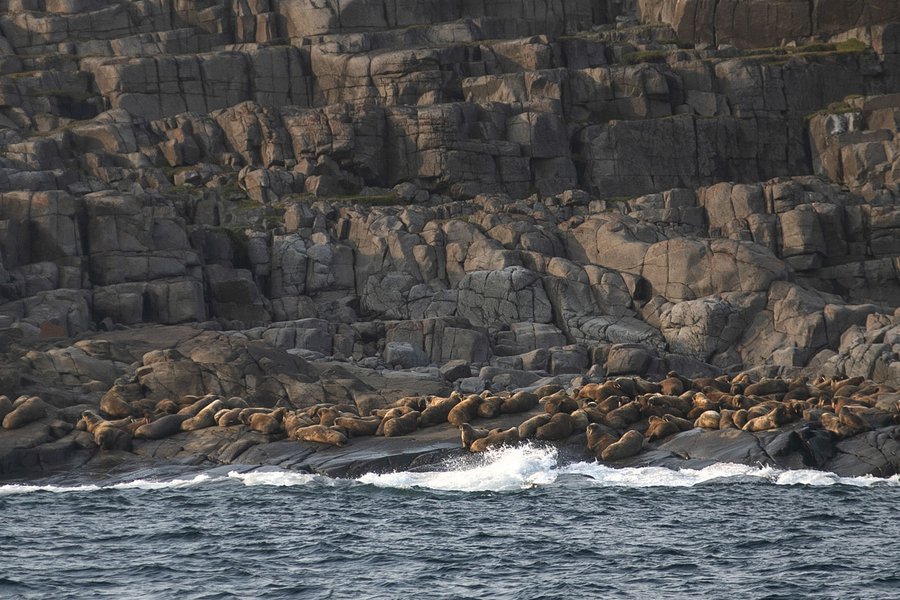
Walruses off the southern coast of Southampton, Nunavut. Photo by Thomas Surian.
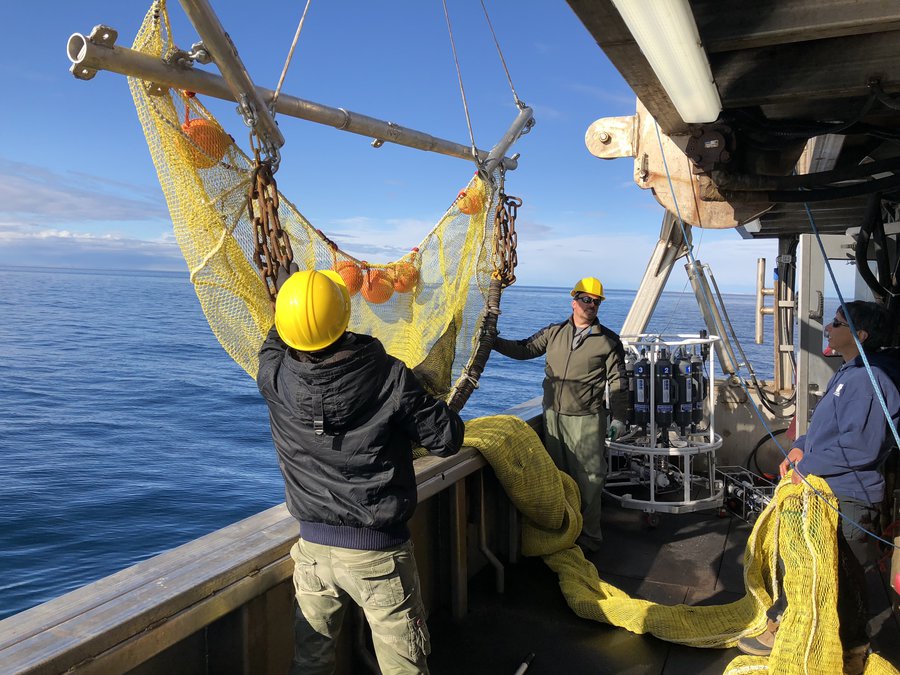
The team during operations aboard the R/V William Kennedy. Photo by C.J. Mundy
Looking forward, we have two and a half days left of data collection, ending with a community visit in the town of Coral Harbour, whose population is just over 800 people living on the southern shore of Southampton Island. I can say that our science voyage has been an incredible success with new discoveries, learning experiences, and collaborations. The William Kennedy is a special ship, she is very stable in high seas (I experienced first-hand 4 m seas on this cruise), has an incredible crew and infrastructure to support scientific operations in both deep and near-shore shallow seas, a large research laboratory, and a perfect size to support a critical mass of scientists to carry out complex and collaborative research without feeling crowded. As a scientist who has been on many large and small research vessels in the Arctic over the last 22 years, I strongly feel the William Kennedy fills an important infrastructure gap that was needed for the Hudson Bay region at a critical point in time. I am excited about future research possibilities aboard the William Kennedy in the years to come.
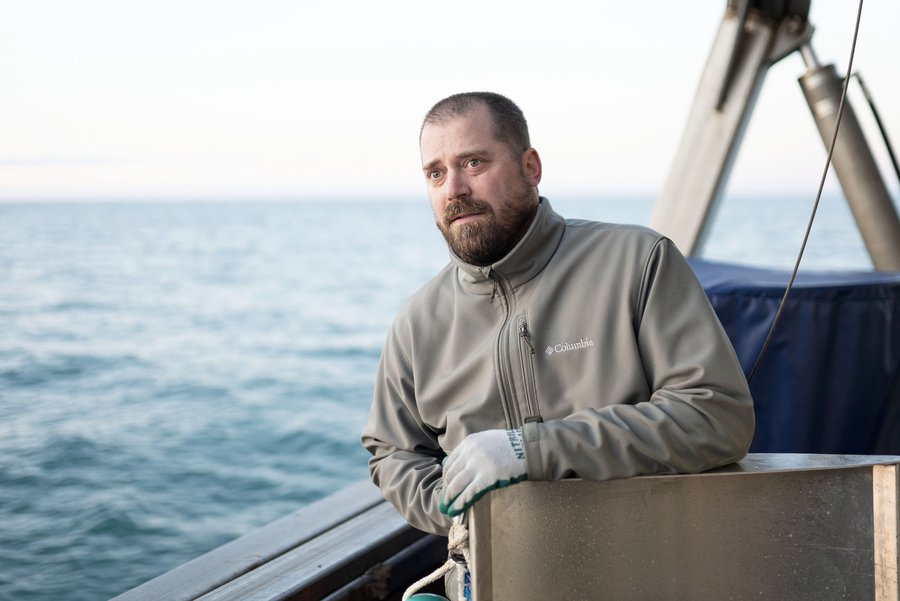
C.J. Mundy prepares to cast a pelagic trawl aboard the R/V William Kennedy, a research vessel operating off the coast of Southhampton Island, Nunavut. Photo by Thomas Surian.
Dr. C.J. Mundy is an Associate Professor in Biological Oceanography at the Centre for Earth Observation Science, Department of Environment and Geography, University of Manitoba. He is principal investigator of the Southampton Island Marine Ecosystem Project, a project supported by a grant from the MEOPAR Network of Centre of Excellence, the Churchill Marine Observatory (CMO), as well as individual grants to project team members from the University of Manitoba, Fisheries and Oceans Canada, University of New Brunswick, University of Alaska Fairbanks, Scottish Association For Marine Science, and Université Laval. Dr. Mundy is also chief scientist for the CMO-Environmental Observatory, which includes the William Kennedy, operated under a collaboration between the University of Manitoba and Arctic Research Foundation and funded by the Canada Foundation for Innovation, Province of Manitoba, and Western Economic Diversification Canada.

